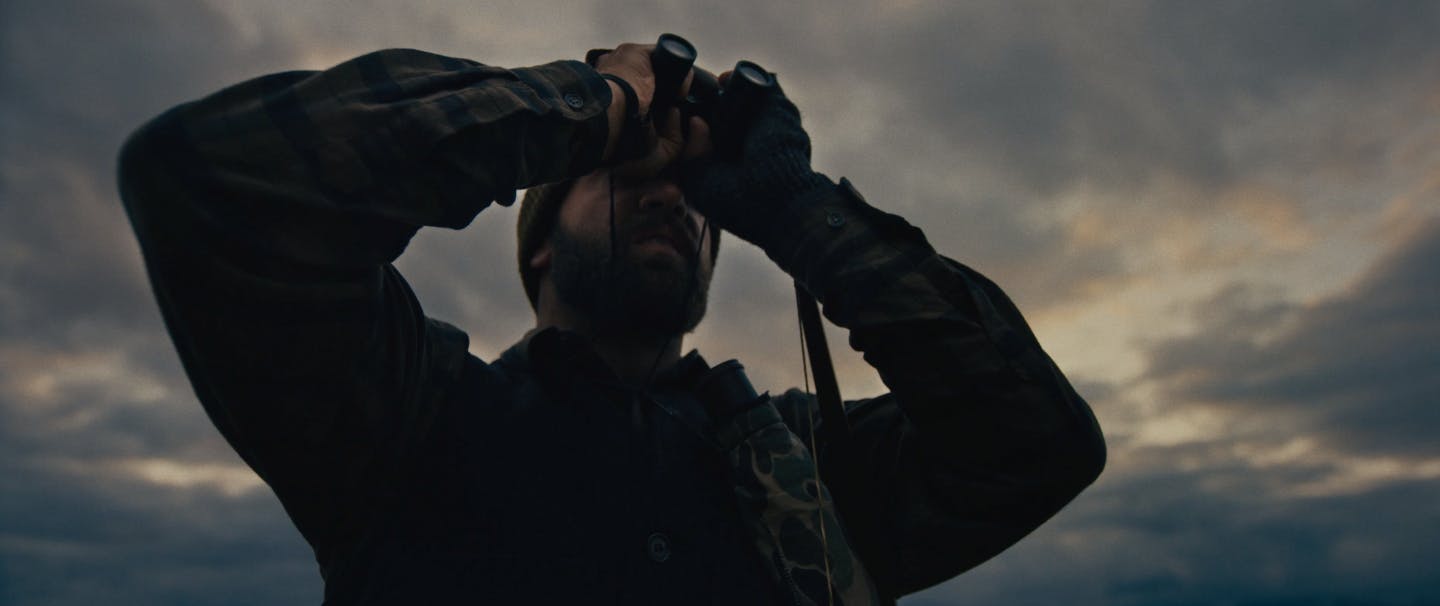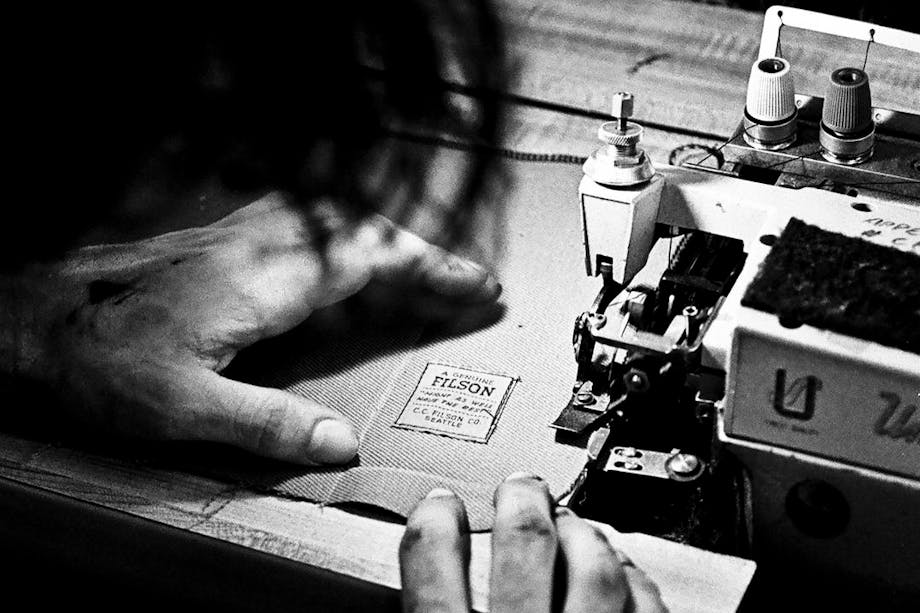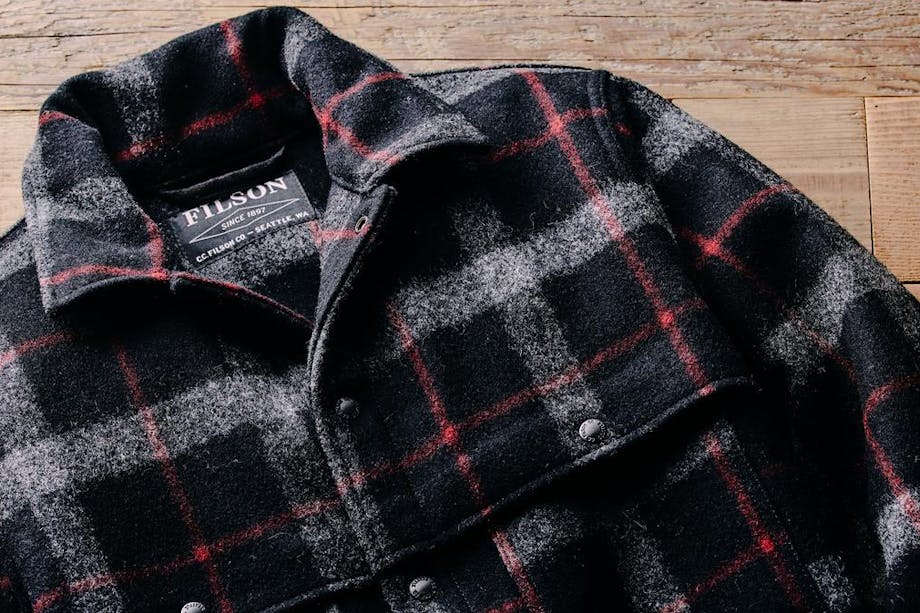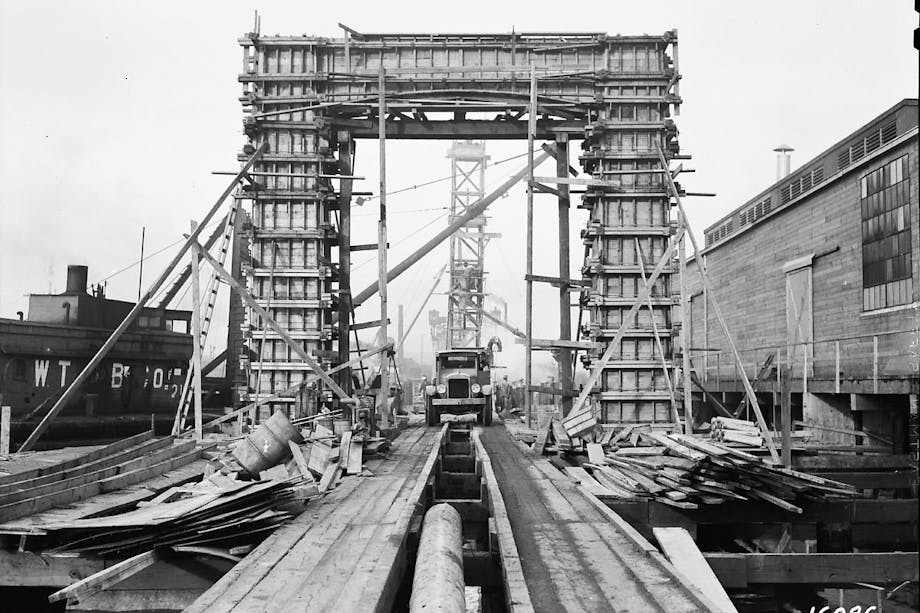Since 1897 we’ve had the same mission: To create best-in-class products that outsmart the elements, outperform expectations, and outlast you.
Clinton C. Filson established his company to outfit prospectors driven to strike gold regardless of environmental obstacles. These miners were soon joined by hunters, anglers, engineers, and explorers. The hardiness of Filson Mackinaw Coats and Wool Field Pants made them unrivaled for keeping comfortable and staying alive in the wilderness. Filson’s reputation continued to grow among those leading an active outdoor lifestyle, whether casting off a gravel bank in light March snow or pushing through tangled understory in pursuit of a 12-point buck. Outdoorsmen of all stripes looked to Filson as a trusted guide.
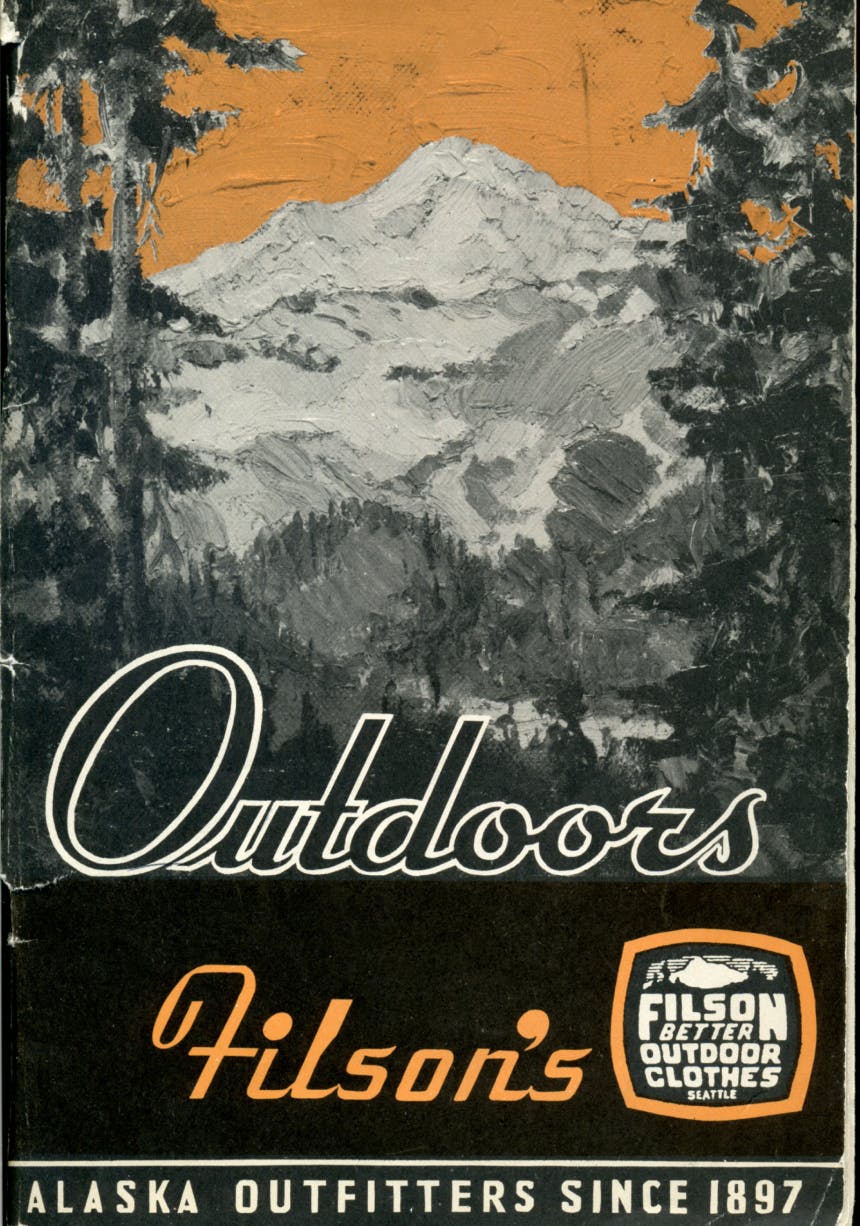
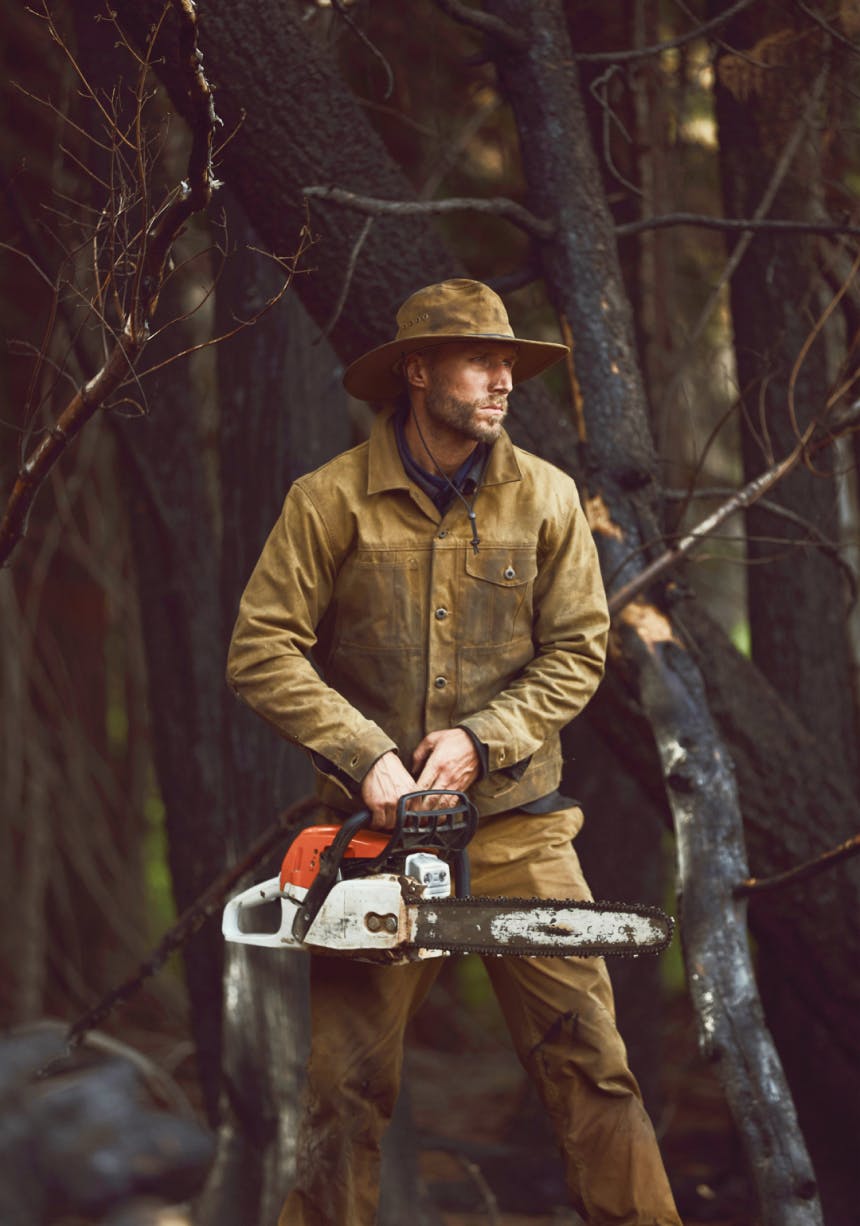
“THE ORIGINAL ALASKA OUTFITTER”
The Gold Rush Years
In 1897 on First Avenue in Seattle, Washington just steps from where the steamship Portland had docked with one ton of Klondike gold in its hold, “Gold in Alaska, untold riches to be found!” rang across the telegraph wires. Clinton C. Filson would equip his gold-seeking prospectors with purpose-built provisions to survive one of the harshest environments on earth. Operating his own mill, C.C. Filson manufactured Mackinaw woolens, coats, blankets, and knit goods.
He also sold boots, shoes, and moccasins, all designed with exacting standards of functionality, durability, and warmth to endure the unforgiving conditions of the subarctic Yukon. The Filson name swiftly became synonymous with survival.

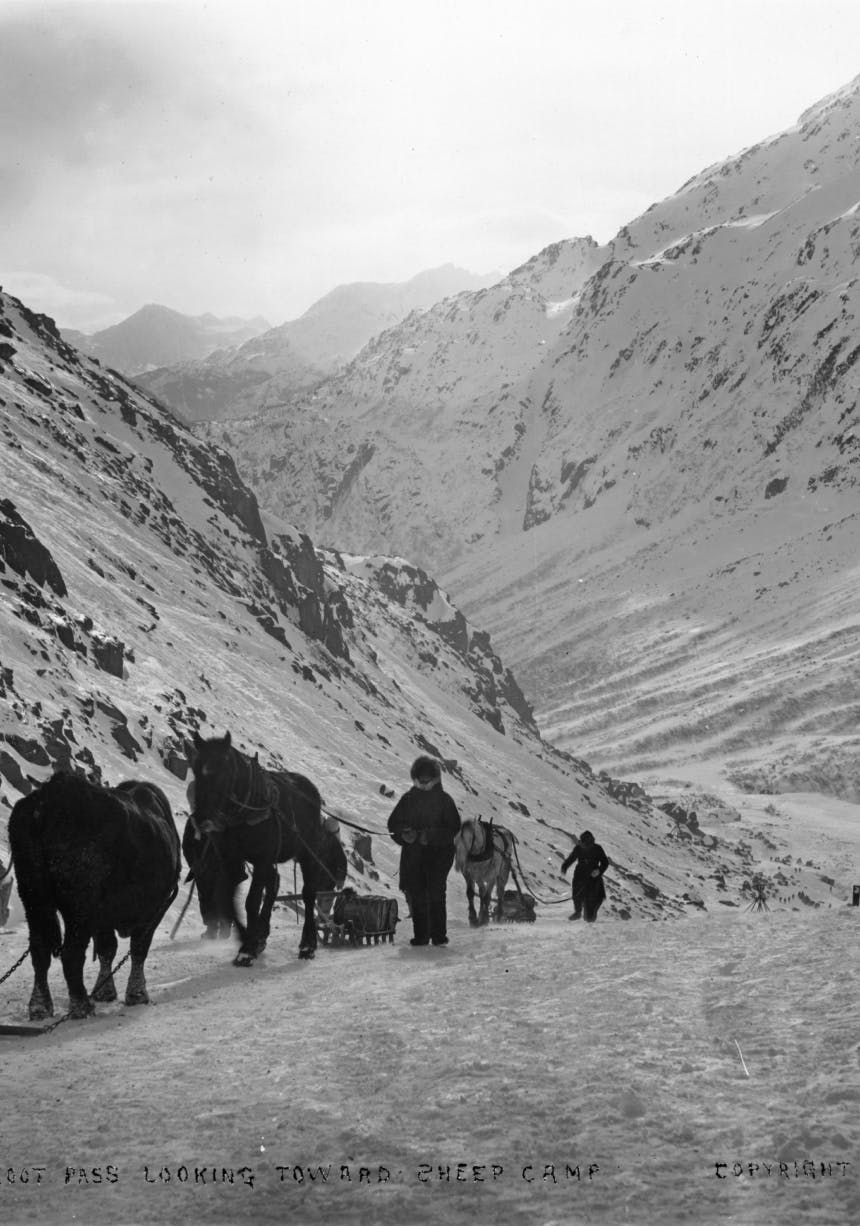
Image 1: One of Filson’s earliest retail stores located at 1011 First Avenue and Madison Streets in Seattle, circa 1930. | Image 2: Klondike Gold Rush - Brooks Range, Alaska.
“UNFAILING GOODS”
Filson & the Logging Industry
For every prospector who struck it rich in the Klondike, thousands more sailed back into Seattle’s port either penniless or saddled with debt. Desperate for employment, these former prospectors turned to the immense forests of the Pacific Northwest to work in the booming timber industry. Filson had already sold protective clothing to the loggers who cleared the wagon trail from Sauk City to Monte Cristo during the brief Monte Cristo gold rush. He knew exactly what loggers needed to wear when working: a roomy yet agile and warm garment that could stand up to tenacious outdoor work. He set about perfecting the design that would become the first Filson Cruiser, a garment so revolutionary that on March 3, 1914, the Filson Cruiser received U.S. Patent #1088891. With its trademark pockets built to accommodate surveyor tools, the Cruiser quickly became the gold standard in the forests. Clinton had never intended the Filson Cruiser to become a national sensation. He created it to service loggers in the timber industry, naming the garment after the “Timber Cruiser,” a logger who pierced the forest to locate the most productive timber zones.
More than a century later, the 1914 Filson Cruiser is almost indistinguishable from today’s version.

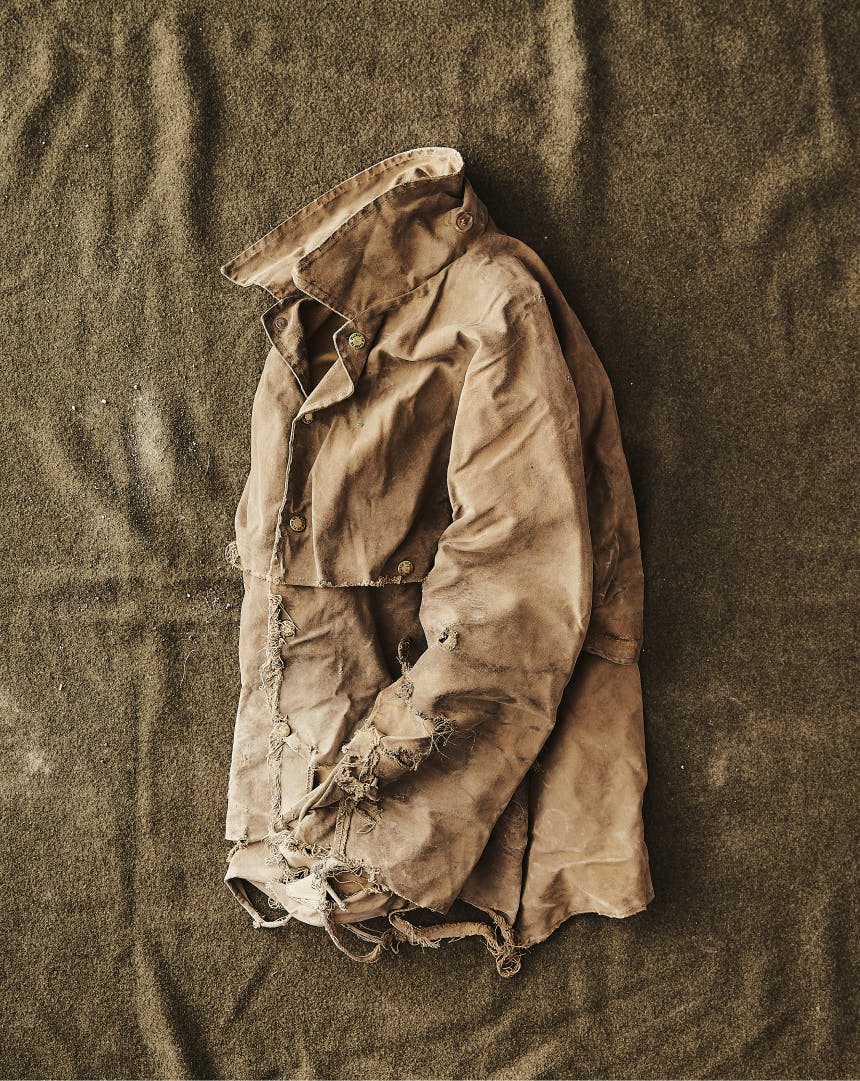
Image 1: March 3, 1914, the Filson Cruiser received U.S. Patent #1088891. | Image 2: The Cruiser: named after the “timber cruiser,” a logger who pierced the forest’s rough understory to locate the most productive timber zones.
“BETTER OUTDOOR CLOTHES”
If it ain’t broke, don’t fix it.
Through the years, Filson created products to keep workers comfortable, dry, and warm. The original Mackinaw Cruiser was conceived and constructed 120 years ago to repel rain and keep the occupant comfortable and safe as he or she toiled outside. Filson Wool Flannel Shirts were built-in weights ranging from 5 oz. to 10 oz. for varying conditions and climates. Oil finish Tin Cloth was invented to provide maximum protection against rain, wind, brush, and abrasion, an ideal garment for work in the American West. Filson’s thermal socks, shirts, vests, and jackets were developed to provide superior insulation from the world’s most frigid temperatures, wet or dry. To ensure quality, Filson still makes many of these items in-house where the highest standards and durability have reigned as driving principles for well over a century.
Only the finest available materials are used to construct Unfailing Goods. True to tradition, these items have become instant best-sellers that have crossed over into mainstream popularity.

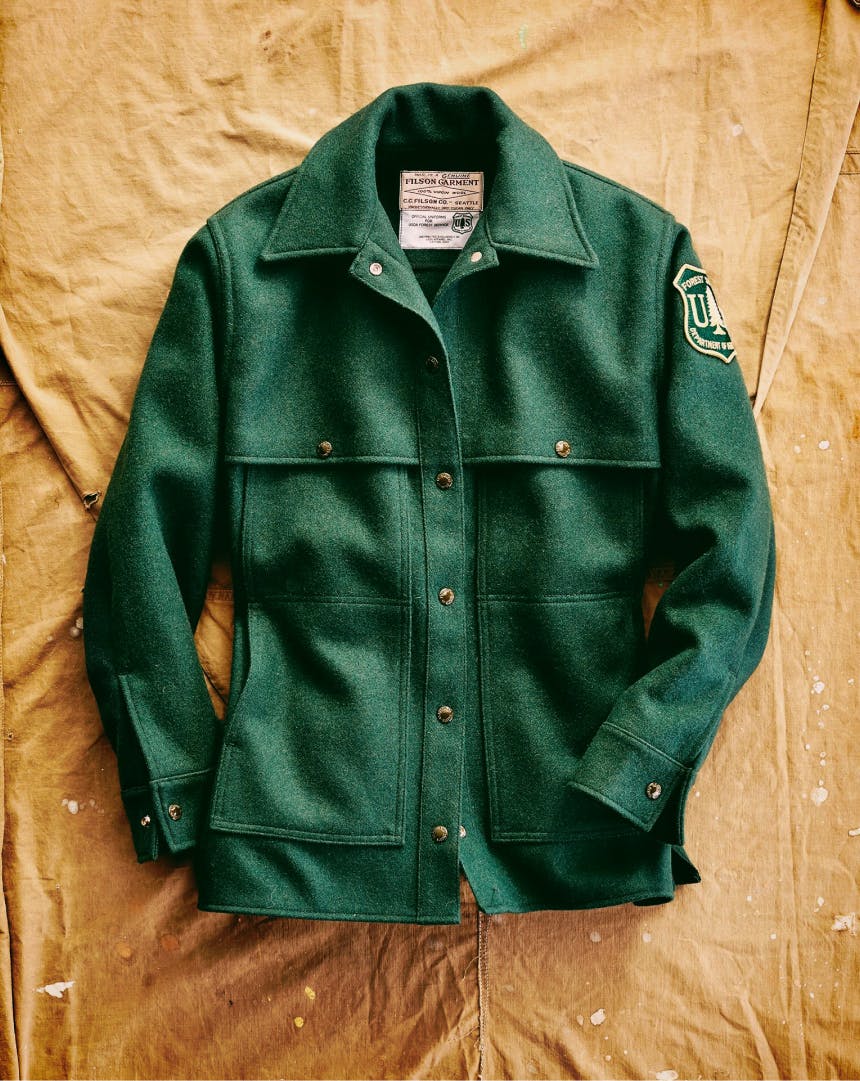
Image 1: In 1943, the U.S. Coast Guard assigned Warren Blodgett to a mission in the Bering Sea. In preparation for the journey, Blodgett was taken to C.C. Filson Company in Seattle for a wool jacket guaranteed to withstand the harsh climate ahead. His jacket still hangs today in the Coast Guard Museum Northwest. | Image 2: As early as the 1920s, and continuing to this day, Filson products became accepted by workers as de facto Forest Service uniform wear. From the 1950s through the 1990s, Filson was contracted to produce official uniforms for Forest Service personnel.
FILSON TODAY
Problem Solving Gear in the 21st Century
Filson was founded on the principle to protect those working in the outdoors regardless of weather, landscape, or occupation. This mission continues today on fishing boats, in forests, and on ranches where men and women undertake some of the toughest work in the world. Such occupations require total preparedness for the task at hand and, often, life-threatening encounters with the unexpected: a downpour in near-freezing temperatures, or a whiteout in the Wyoming foothills. Fixing a utility line in biting wind or mending a fence in freezing rain requires fortitude. Yet these men and women get up and go to work every day and expect their gear to hold up to the same standard.
Filson has constructed the lion’s share of its products in Seattle using premium materials regardless of expense. To this day, Filson is the manufacturer depended upon for problem-solving outdoor clothing and gear built with expertise earned over a lifetime of serving pioneers and adventurers.

Image 1: One of Filson's U.S. factories. | Image 2: Our 1st Avenue Flagship Store in Seattle. | Image 3: The Filson Restoration Department, repairing and repurposings bags and materials. | Image 4: Manufacturing at our 1st Avenue location.
Filson’s mission to manufacture the highest-quality outfitter gear has remained unchanged for over 123 years. From equipping those bound for the Klondike Gold Rush in 1897 to outfitting the sportsmen and workers of today, we deliver Unfailing Goods. Our first blankets, parkas, and supplies were made in Seattle, and our factories have been running ever since. That legacy continues, even as we expand and scour the globe for the best raw materials, technologies, and factories to produce world-class clothing and gear. Wherever we manufacture goods, quality drives every decision we make.
“Your satisfaction is the sole purpose of our transaction.” – Clinton C. Filson, 1897
